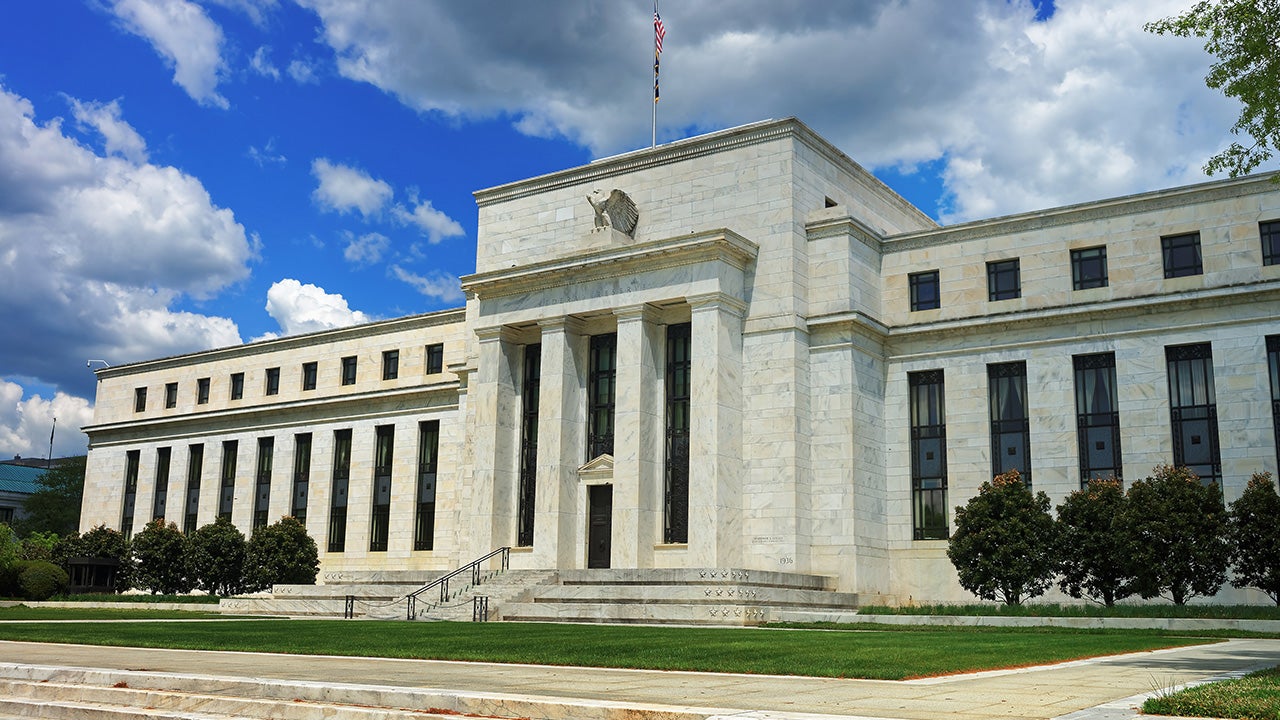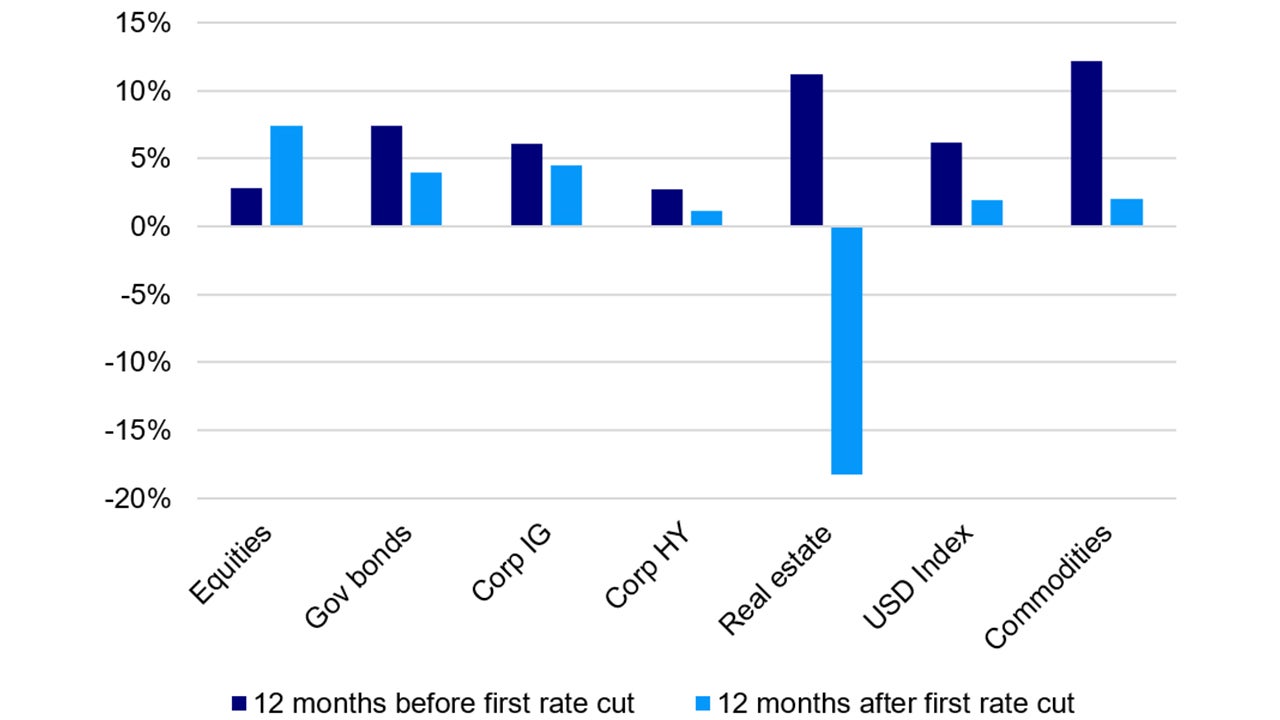Part 1: How should investors position ahead of the Fed’s potential first rate cut?

The recent US stock rally after Fed Chair Powell gave an economic policy speech at the Jackson Hole summit in which he said that “the time has come for policy adjustment” may reflect investor’s perception that stocks go up when interest rates go down.
This view is generally correct since rate cuts lead to greater financial liquidity in the market which tends to boost household demand and support risk assets (chart).
Though this time around, I’m more doubtful that we will see a broad-based equity market rally when the Fed’s first rate cut comes in September.

Notes: Past performance is no guarantee of future results. An investment cannot be made directly in an index. Based on Federal Reserve interest rate cycles since 1974. Please see Appendix for methodology and index definitions. As of Aug 31, 2024. Sources: ICE, ICE BofA, FTSE Russell, MSCI, S&P GSCI, Refinitiv, LSEG Datastream, and Invesco.
US equities may see limited upside from interest rate cuts
Back in 2022 when the Fed started to hike rates, US equities declined as yields rose. Will the converse hold true this time when the Fed starts to cut rates?
Probably not – because the starting point for relative valuation is different. Back in 2022, US stocks were expensive on a relative, risk adjusted basis to US bonds.
The situation is different now, with the recent run-up in stocks. US equity valuations appear full at these levels and I see limited upside from interest rate cuts.
All that said, I believe that it would take faster and deeper Fed rate cuts that push bond yield to unattractive levels for stocks to meaningfully benefit from interest rate cuts.
The biggest risk to markets over the next 12 months is whether the US economy will slide into a hard landing or not.
Growth continues to be below trend and the labor market is reflecting bigger cracks in the economy.
While markets have largely shrugged off these developments, economic headwinds have intensified. The recent downwards revision of non-farm payrolls by the US Labor Department was the second-largest negative revision on record1.
Leading indicators suggest the US economy continues to slow2. I believe it may make sense for investors to become more defensive by overweighting fixed income over equities.
Overweighting fixed income
From a valuation and risk-adjusted basis, US equities appear overstretched and so adding duration and credit to a portfolio could make more sense especially in front of the Fed commencing a rate cutting cycle.
In addition, the US presidential election is just around the corner. Historically over the past 7 election cycles, one-year returns post elections have been strong across the US credit sectors regardless of the outcome.3
With each candidate polling close to even at this point, it’s still a toss-up. A potential Trump 2.0 presidency could bring economic and geopolitical uncertainty that could impair risk appetite.
Macro conditions are ripe for US fixed income to outperform: Fed cuts looming on the horizon, the risk of US recession creeping up and uncertainties over US presidential election.
A strong argument could be made to for an allocation across the yield curve.
Short-term treasury yields are likely to fall due to imminent interest rate cuts while longer duration yields could also fall due to recession concerns.
It also makes sense for an allocation to investment grade and high yield bonds to capture the current attractive yield environment and position more defensively as we move through a murky macro and political backdrop in the US.
Investment risks
The value of investments and any income will fluctuate (this may partly be the result of exchange rate fluctuations) and investors may not get back the full amount invested.
Reference:
-
1
US job growth in year through March was far lower than estimated | Reuters
-
2
Source: Bloomberg, 31st July 2024. Conference Board Leading Indicators.
-
3
Source: Bloomberg, 3rd September 2024.




